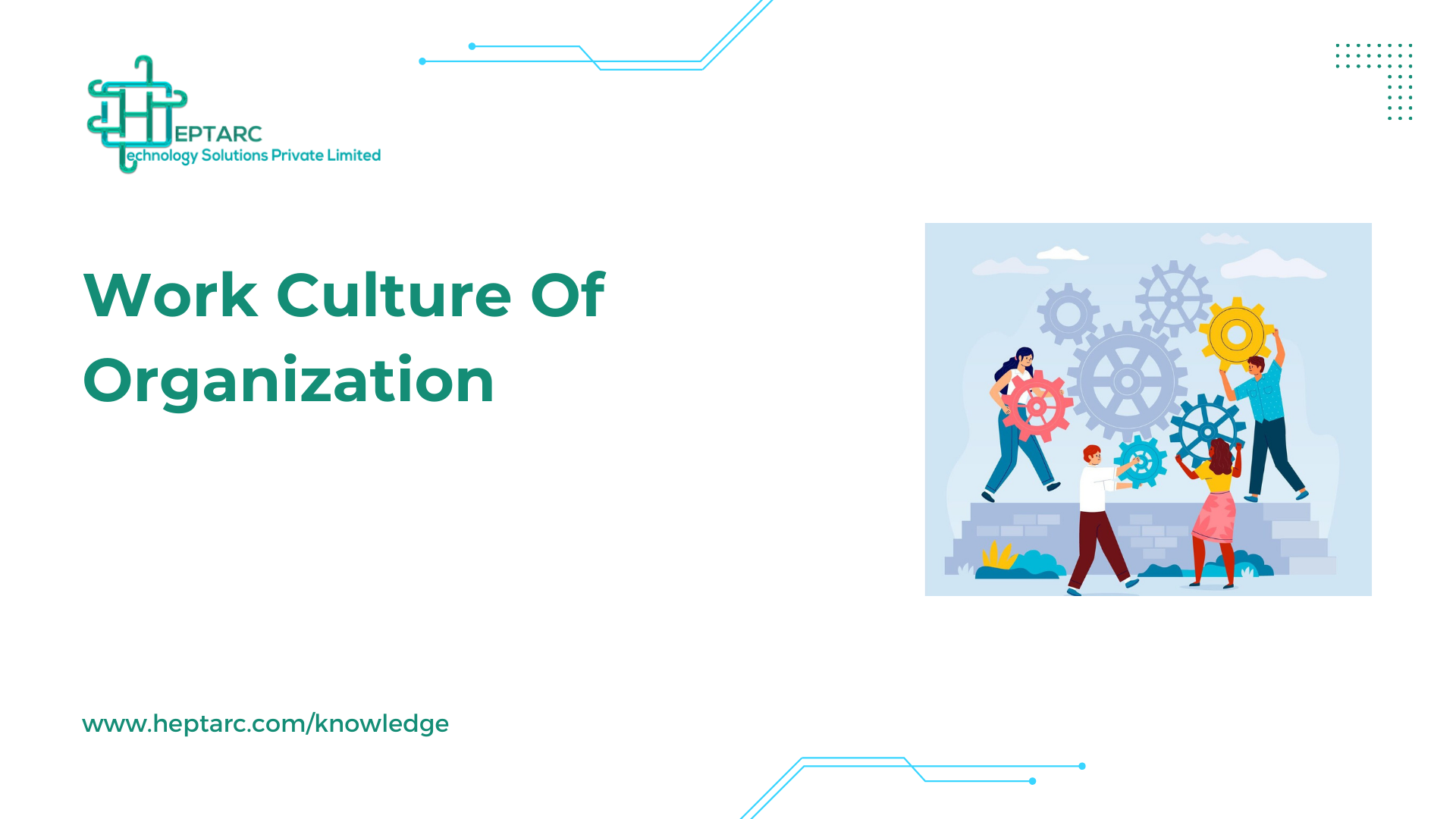
Work Culture Of Organization
Introduction
An organization’s common values, beliefs, attitudes, and behaviors that define how work is done and how co-workers interact are referred to as the work culture. The term “work culture” refers to the shared values, beliefs, customs, and behaviors that shape how employees interact, collaborate, and conduct themselves at work. Together with formal and informal elements like social interactions, work-life balance, and communication styles, it also consists of corporate structure, management techniques, and legal requirements for businesses.
Table of content
- INTRODUCTION.
- HOW WORKCULTURE OF ORGANIZATION CAN BE IDENTIFIED?
- HOW TO DEVELOP POSITIVE WORK CULTURE?
- BENEFITS OF POSITIVE WORK CULTURE
- ORGANIZATION’S CULTURE PROFILE.
- CONCLUSION.
- BIBLOGRAPHY.
HOW WORKCULTURE OF ORGANIZATION CAN BE IDENTIFIED?
It takes careful observation and investigation to determine an organization’s work culture. The following actions can assist in gaining insights:
1-Interview each of your present staff one-on-one such as weekly feedback calls.
2-Examine employee questionnaires and interviews closely to learn about your staff’s perspectives on various subjects.
3-Make use of cross-functional measures including KPIs, productivity, innovation, and turnover.
4-Observe the employee onboarding procedure to determine whether the techniques are antiquated and repetitious or unique and interesting.
5-Observe outside resources, such as websites with employee reviews. Feedback from third parties is helpful in understanding how staff members feel about the culture of the company.
6-Observe how groups function together to learn about their interpersonal relationships, degree of respect for one another’s perspectives, and openness to exchanging ideas.
HOW TO DEVELOP POSITIVE WORK CULTURE?
Establishing a positive workplace culture is essential for new businesses, particularly in their first phases. Strong cultures have an impact on overall success as well as employee satisfaction. The following are some methods to promote a happy work culture
- Determine Core Values:
- List the essential principles that support the goals and objectives of company
Make these values apparent to every team member.
Hire according to these principles to guarantee cultural congruence.
- Encourage Open Communication:
- Foster a culture of open communication among team members.
Actively hear what employees have to say, and take swift action to resolve issues.
Transparency enhances the culture and fosters trust.
- Promote Cooperation:
- Establish avenues for interdepartmental cooperation.
Collaborate on projects and achieve common objectives to promote teamwork.
Honor group accomplishments to strengthen cooperation.
- Encourage Autonomy:
- Have faith in your group and refrain from micromanaging.
Give workers the freedom to decide for themselves inside their jobs.
Ownership and creativity are fostered by autonomy.
BENEFITS OF POSITIVE WORK CULTURE AT WORKPLACE
Positive workplace cultures can have a significant effect on firms and their workforce. Here are a few benefits:-
1. Enhanced Employee Engagement: When workers are motivated, devoted, and enthusiastic about their work, they are more engaged in the workplace.
2. Increased Job Satisfaction: Workers are happier in their jobs when they work in a courteous and encouraging environment. Contented workers are more inclined to stick with the company.
3. Improved Cooperation and Teamwork: Friendly environments promote candid dialogue, mutual respect, and teamwork. Better teamwork and more efficient problem-solving result from this.
4. Attracting Top Talent: Top talent is drawn to organizations with a favorable culture. Talented people look for environments in which they can flourish and feel appreciated.
5.Decreased Turnover: Poor morale and productivity are caused by high turnover. Positive workplace cultures lower turnover rates by aiding in employee retention.
6. Enhanced allegiance and Diminished Adverse Conduct: Workers who perceive their worth are more devoted to the company. Positive work settings reduce negative behaviors like gossip and conflict.
ORGANIZATION CULTURE PROFILE
- Innovative:- An innovative work culture encourages openness to new ideas, creativity, exploring different knowledge, encouraged to experiment, learning from failure, flexibility to change & staying ahead of new trends.
- Aggressive:- An aggressive work culture opts for intense competition, high expectations, result-oriented, conflict solving & confrontation.
- Outcome Oriented:-An outcome-oriented culture prioritizes performance while preserving a sound equilibrium between the welfare of employees and moral behavior such as clear objective, measurable results, performance metrics
- Stable stable point in an organization’s work culture is a condition in which it upholds equilibrium, consistency, and predictability. While stability can offer a feeling of security, companies must also be willing to adapt when necessary to foster innovation and progress.
- People Oriented:-Collaboration, empathy, and a feeling of community are fostered relationships by a people-oriented culture, which enhances organizational effectiveness such as mutual respect, and positive, customer service focus.
- Team Oriented work culture that is focused on the team strongly values cooperation, common objectives, and group achievement. It encourages cohesion, creativity, and a feeling of community.
Bibliography
CONCLUSION
Productivity and workplace culture are inextricably intertwined.
Collaboration, creativity, and open communication are all encouraged in a great work environment. It can also encourage employees to become more deeply involved in their work and build closer relationships with their colleagues.
Consequently, this can boost motivation and result in better performance. Research indicates that organizations possessing a robust culture might witness a 72% increase in employee engagement compared to those whose cultures are not aligned or require upgrading.
Additionally, a study conducted by the international analytics and consulting firm Gallup showed that companies with engaged staff make 23% more money than those with disgruntled personnel.

